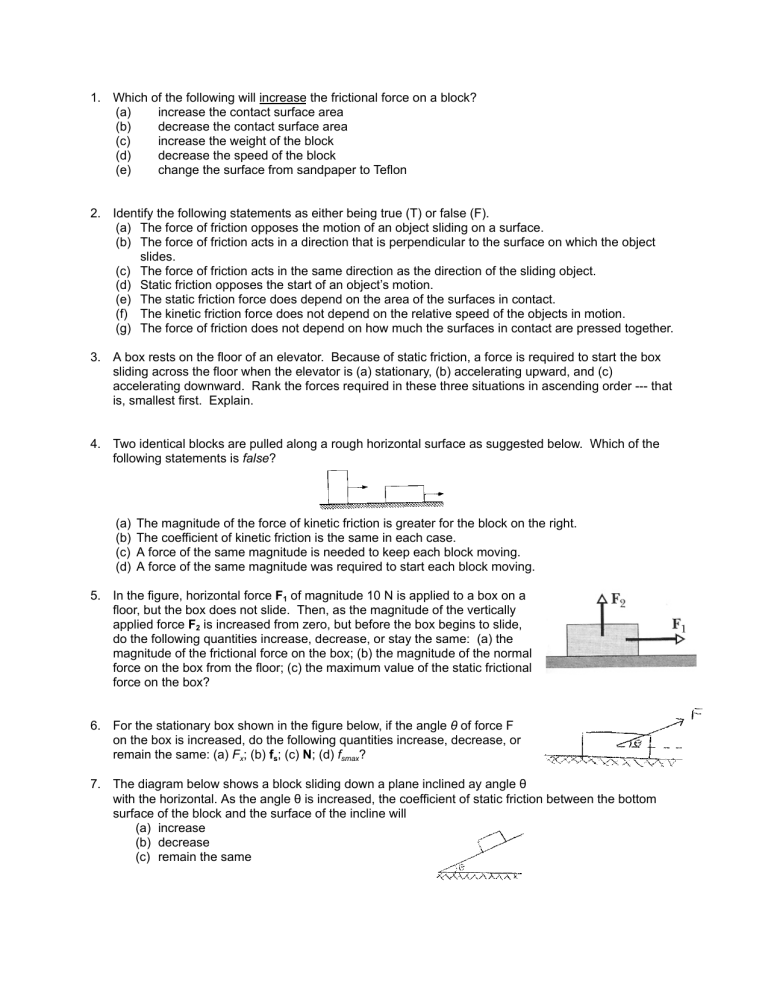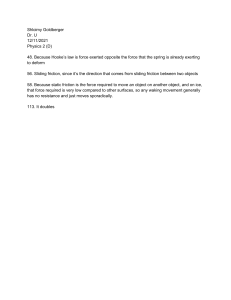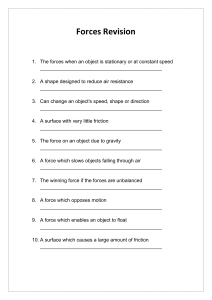
1. Which of the following will increase the frictional force on a block? (a) increase the contact surface area (b) decrease the contact surface area (c) increase the weight of the block (d) decrease the speed of the block (e) change the surface from sandpaper to Teflon 2. Identify the following statements as either being true (T) or false (F). (a) The force of friction opposes the motion of an object sliding on a surface. (b) The force of friction acts in a direction that is perpendicular to the surface on which the object slides. (c) The force of friction acts in the same direction as the direction of the sliding object. (d) Static friction opposes the start of an object’s motion. (e) The static friction force does depend on the area of the surfaces in contact. (f) The kinetic friction force does not depend on the relative speed of the objects in motion. (g) The force of friction does not depend on how much the surfaces in contact are pressed together. 3. A box rests on the floor of an elevator. Because of static friction, a force is required to start the box sliding across the floor when the elevator is (a) stationary, (b) accelerating upward, and (c) accelerating downward. Rank the forces required in these three situations in ascending order --- that is, smallest first. Explain. 4. Two identical blocks are pulled along a rough horizontal surface as suggested below. Which of the following statements is false? (a) (b) (c) (d) The magnitude of the force of kinetic friction is greater for the block on the right. The coefficient of kinetic friction is the same in each case. A force of the same magnitude is needed to keep each block moving. A force of the same magnitude was required to start each block moving. 5. In the figure, horizontal force F1 of magnitude 10 N is applied to a box on a floor, but the box does not slide. Then, as the magnitude of the vertically applied force F2 is increased from zero, but before the box begins to slide, do the following quantities increase, decrease, or stay the same: (a) the magnitude of the frictional force on the box; (b) the magnitude of the normal force on the box from the floor; (c) the maximum value of the static frictional force on the box? 6. For the stationary box shown in the figure below, if the angle θ of force F on the box is increased, do the following quantities increase, decrease, or remain the same: (a) Fx; (b) fs; (c) N; (d) fsmax? 7. The diagram below shows a block sliding down a plane inclined ay angle θ with the horizontal. As the angle θ is increased, the coefficient of static friction between the bottom surface of the block and the surface of the incline will (a) increase (b) decrease (c) remain the same



